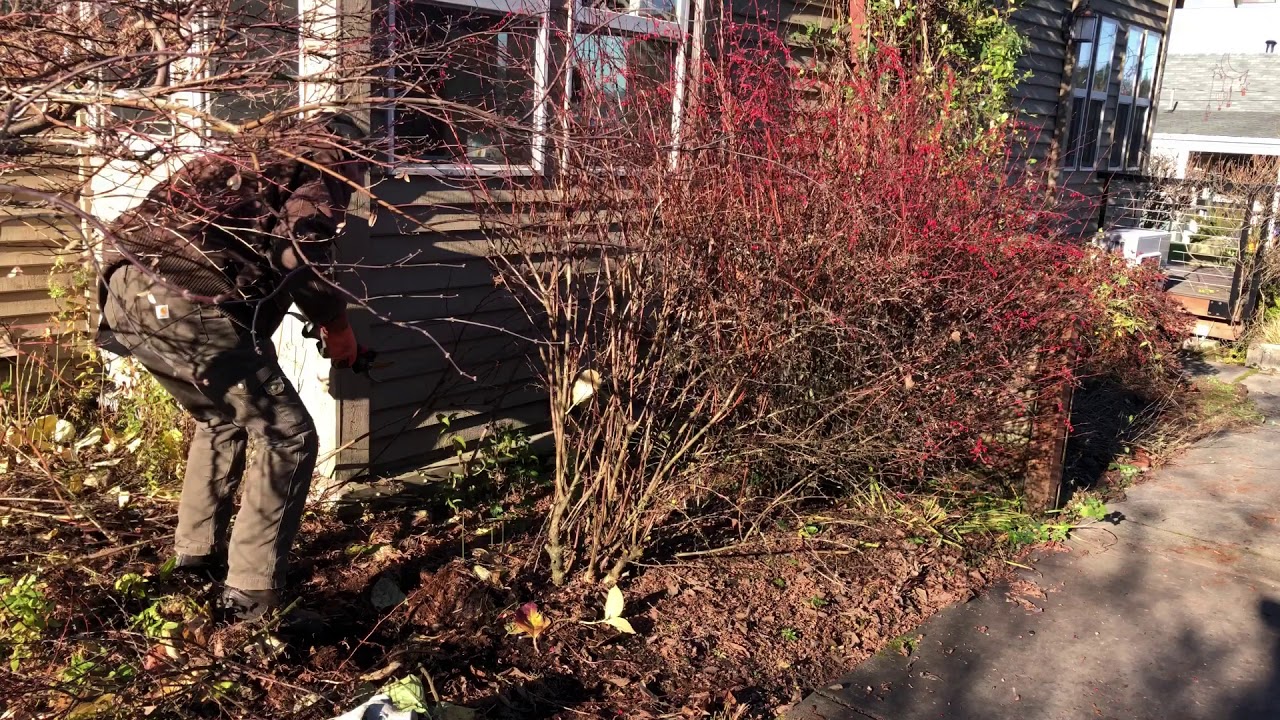Barberry bushes are a popular ornamental shrub known for their attractive foliage and hardy nature. But like most shrubs, they need occasional pruning and trimming to keep them looking their best. A common question homeowners have is how far back can you cut them back without damaging the plant. The good news is barberries are quite resilient and respond well to radical pruning when needed.
How Much Can You Prune Barberry?
Any barberry species can be trimmed back drastically when overgrown. In fact you can cut them right back to the ground if desired. Barberries have an impressive ability to re-sprout from very severe pruning. If the plant is healthy and situated in a good growing site it will likely produce more growth than expected that first season after hard pruning.
The exact amount of regrowth depends on the variety. Full size barberry cultivars often reach around 3 feet tall in the first year after being cut back to the ground. More compact types may only grow 12-18 inches of new shoots from ground level pruning. As long as the plant is vigorous and you leave no more than 2-3 inches of stem, barberries will recover remarkably fast.
When to Severely Prune Barberry
You can trim barberries hard at almost any time. However, it’s best to wait until late winter or early spring before renewal pruning. This allows the plant time to generate new growth before summer. Late fall or winter pruning runs the risk of removing frost damaged wood that protects the roots and stems.
If you must prune in fall or winter wait until late in the season when hard frosts have passed. Leave at least 2 inches of stem to protect the plant from winter cold. Then you can cut back further in spring once new growth emerges if desired.
Tips for Cutting Back Overgrown Barberry
Here are some useful tips to follow when severely cutting back overgrown barberry bushes:
-
Wear protective gloves and clothing. Barberry stems have very sharp thorns that can easily scratch skin. Eye protection is also a good idea.
-
Use sharp, clean bypass pruners or loppers for smaller stems. Hedge shears or a pruning saw work better for thicker wood.
-
Cut the entire plant back to 6 inches or less from the ground. Remove all old stems to force new growth.
-
Shape and thin out old or overcrowded plants for rejuvenation. This stimulates young, healthy new shoots.
-
Remove dead, damaged, or crossing stems anytime. Pruning encourages thicker, compact growth.
-
Avoid leaving stubby half-cut stems. Make clean cuts flush with the ground or a main branch.
-
Disinfect tools between plants to prevent disease transmission. Rubbing alcohol works well for this.
-
Water and fertilize after major pruning. This aids recovery and rapid regrowth.
-
Allow 1-3 years reforming time for older, overgrown specimens pruned hard.
Step-By-Step Guide to Rejuvenation Pruning Barberry
Follow these simple steps for renewing overgrown, neglected barberry specimens:
Gather Necessary Equipment
You’ll need bypass hand pruners, loppers, hedge shears, pruning saw, gloves, and eye protection. Disinfect tools before starting.
Trim All Stems Back to Base
Cut every stem back flush to the ground, leaving no more than 2-3 inches. Remove all old wood to force new shoots.
Shape and Thin Interior Growth
Selectively remove inward facing branches and thin dense interior growth to open up the plant.
Remove Dead or Damaged Stems
Cut out any dead, diseased, broken, or insect infested stems back to a healthy junction.
Make Clean Cuts Close to Base
Do not leave half-cut stubs. Prune flush to the soil line or originating branch for best regrowth.
Clean Up Debris
Remove all fallen branches, stems, and leaves around the plant. Dispose of this debris promptly.
Fertilize and Water Well
Feed with a balanced fertilizer and water thoroughly after major pruning to aid recovery.
Allow Time to Re-grow
Be patient for new growth to emerge. It may take 1-3 years for old shrubs to reform fully after hard pruning.
Avoiding Problems After Heavy Pruning
It’s normal for barberries to look nearly dead after severe cutting back. But resist the urge to replace the plant unless you are sure it has actually died. Leave the stumps intact and wait for new shoots to appear. It often takes until early summer before visible regrowth emerges. Water and fertilize regularly after pruning to help speed recovery.
With proper followup care, most healthy barberry specimens will rebound from even the harshest pruning. Their natural resiliency and ability to regenerate new growth makes rejuvenation pruning a very viable option for overgrown, neglected barberry bushes. With some patience, you can restore an old, overgrown barberry to its former beauty using this simple yet effective pruning technique.
Your Green Thumb Support
Mon-Thur, 7 AM – 8 PM CST
Fri, 7 AM – 5 PM CST
Sat-Sun, 8 AM – 5 PM CST
Mon-Fri, 8 AM to 5 PM CST
Whether you want a manicured hedge or a natural look, the Barberry shrub is for you. Barberry is a woody, branched, deciduous or evergreen shrub. Springtime flowers introduce color and texture and later turn into berries. The small green foliage can turn vibrant red, orange, and yellow hues during the fall. Keep Barberry plants looking their best with minimal routine maintenance. This shrub can be trimmed to keep its formal or streamlined look, or it can be trimmed to make it grow fuller.
When to Prune Barberry
Timing matters when pruning bushes like the Barberry. A good time to shape Barberry plants is in the late spring or early summer. Wait until the spring flowers fade to trim the plant. Trimming earlier in the spring may prevent flowers and later berries from developing. One annual pruning is enough to shape the bush.
The Barberry is low maintenance and does not require much trimming or pruning. Deadheading Barberry plants is unnecessary. Remove dead and damaged branches throughout the year as they are found. Avoid pruning Barberry when the plant is dormant during the winter.
There are plenty of reasons why you should prune Barberry. Trim the branches to create clean lines and a consistent form for a formal or manicured look. You can make a hedge by planting a row of shrubs and then trimming them to keep their shape and size the same. Pruning Barberry plants will encourage healthier branching and create full, dense growth.
How to Prune Berberis by The Gardening Tutor-Mary Frost
FAQ
How to prune an overgrown barberry bush?
Can you use hedge trimmers on barberry?
Can you hard prune Japanese barberry?
Can you divide a barberry bush?
When should you prune a Barberry Bush?
Pruning in the fall will help your barberry bush stay healthy and vigorous for many years to come! Prune your barberry bush in the late winter or early spring before new growth begins. Look for any dead, diseased, or damaged branches and remove them. Also, remove any branches that are crossing or rubbing against each other.
How do you prune a leggy Barberry Bush?
A leggy barberry bush is not as full and dense as a bush that has been properly pruned. To prune your barberry bush for size, you will need a sharp pair of pruning shears. You can find these at most hardware stores or online. Start by trimming off any dead or dying branches. Then, cut back any branches that are longer than you want them to be.
Do you cut back a Barberry Bush?
If you want your barberry bush to stay a certain size or shape, you’ll need to cut back any branches that are growing out-of-bounds. For example, if you want your bush to be round, you’ll need to cut back any branch that’s growing significantly taller than the others.
When should you cut back a barberry tree?
Although the plant does not lose its leaves, it does go into light dormancy from late winter to early spring and this is the best time to trim. Prune deciduous barberry in very early spring, just before new growth begins. The ideal time for thinning or cutback is late March or early April.
- The Ultimate Guide to Growing Strawberries in Raised Beds - August 8, 2025
- No-Dig Garden Beds: The Easiest Way to Grow a Beautiful Garden - August 6, 2025
- How to Protect and Preserve Wood for Raised Garden Beds - August 6, 2025

